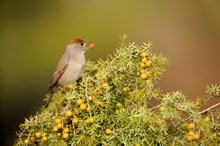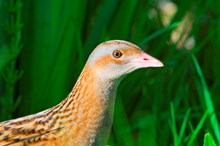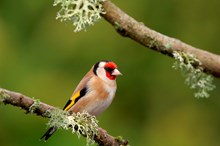17 November, 2016
Scotland’s woodland birds up two-thirds overall since 1994
Woodland birds have increased by 68 percent overall since 1994, according to a new report from Scottish Natural Heritage (SNH).
The Official Statistic for Terrestrial Breeding Birds, published today, reveals mixed fortunes for birds in Scotland, with woodland and farmland birds increasing and upland birds decreasing overall.
Some woodlands bird populations have increased hugely, such as great spotted woodpeckers, which have increased by 530 percent, and chiffchaffs, which have increased by 752 percent. The reasons for changes aren’t certain, but changes in how woodland is managed may be starting to help woodland birds. As well, the effect of climate change is making a big difference for some woodland birds in Scotland – improved conditions in their wintering areas have helped chiffchaffs, for example. Willow warblers and tree pipits are also good examples, showing more positive trends in Scotland than further south. Willow warblers have increased by 46 percent, with tree pipits up 86 percent.
Farmland birds have also increased overall, with long-term increases in several species, including goldfinch (429%), great tit (176%), magpie (143%), corncrake (127%) and whitethroat (99%). Unfortunately, declines continue among waders, with lapwing (down 53%) and oystercatchers (down 40%) experiencing large declines. But targeted management for these species through the Scottish Rural Development Programme is helping boost populations in some areas.
The most negative trend is in upland birds which are, in general, declining. There are some success stories though, including increasing numbers of golden eagles with the most recent national survey showing an increase to an estimated 508 breeding pairs (up 19%). As well, cuckoos in the uplands are bucking the trend with a 129% increase, compared to a decline in UK as a whole. A recent study by the British Trust for Ornithology (BTO) has shown that this may be due to cuckoos from different habitats choosing different migration routes.
Simon Foster, SNH’s trends analyst, said:
“You can help some of Scotland’s bird species by feeding them, particularly in the winter months. This has helped birds such as goldfinch and blackcap, which have seen large increases and can be seen in gardens throughout Scotland. On the other hand, swift populations have continued to decline, so you could help this migrant out by providing nesting sites.”
Across all habitats, goldfinches have increased by 253 percent and blackcaps by 399 percent. Swifts have declines by 52 percent.
See the full report at http://bit.ly/2gl9Rlj
The data for the report are largely collected by volunteers through the BTO/Joint Nature Conservation Committee (JNCC) Breeding Bird Survey. For anyone interested in taking part, BTO are always looking for new helpers. For more information, see www.bto.org/volunteer-surveys
SNH is working on strengthening bird populations and biodiversity throughout Scotland. The Scottish Biodiversity Strategy Route Map was published by Scottish Government in June 2015. It sets out the big steps needed to implement the Scottish Biodiversity Strategy 2020 Challenge, including restoring ecosystems, conserving wildlife, and sustainably managing land, freshwater and the marine environment. The SBS 2020 Challenge is Scotland’s response to the Aichi Targets set by the United Nations Convention on Biological Diversity calling for a step change in efforts to halt the loss of biodiversity and restore essential services that a healthy natural environment provides.
ENDS
Contact information
- Name
- SNH Media
- snhmedia@snh.gov.uk
NatureScot is Scotland's nature agency. We work to enhance our natural environment in Scotland and inspire everyone to care more about it. Our priority is a nature-rich future for Scotland and an effective response to the climate emergency. For more information, visit our website at www.nature.scot or follow us on X at https://x.com/NatureScot
’S e NatureScot buidheann nàdair na h-Alba. Bidh sinn a’ neartachadh àrainneachd na h-Alba agus a’ brosnachadh dhaoine gu barrachd suim a chur ann an nàdar. Tha e mar phrìomhachas againn gum bi nàdar na h-Alba beairteach agus gun dèilig sinn gu h-èifeachdach le èiginn na gnàth-shìde. Tha an tuilleadh fiosrachaidh aig www.nature.scot no air X aig https://x.com/NatureScot



